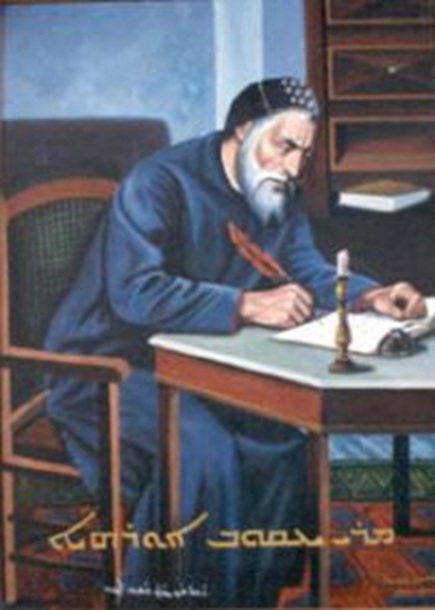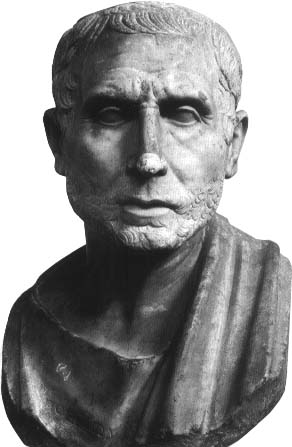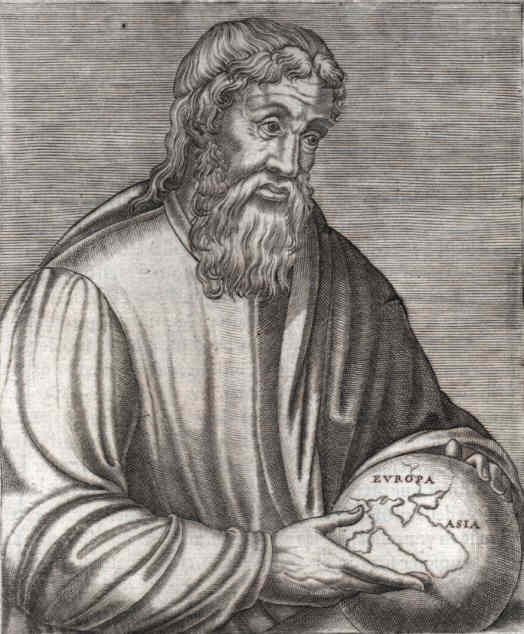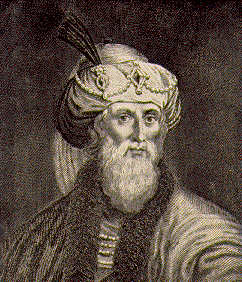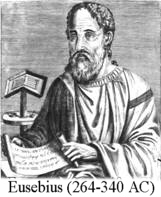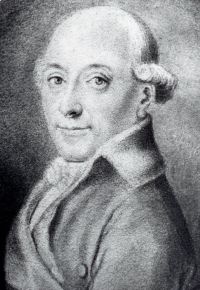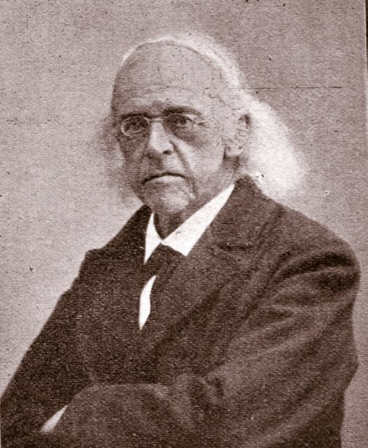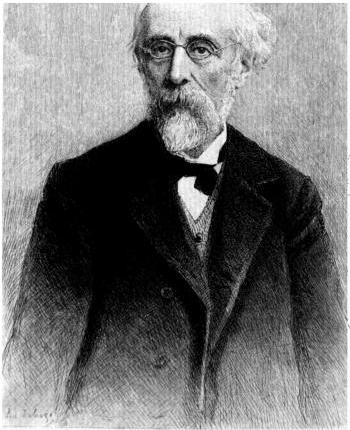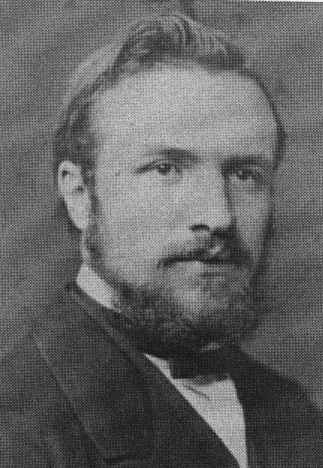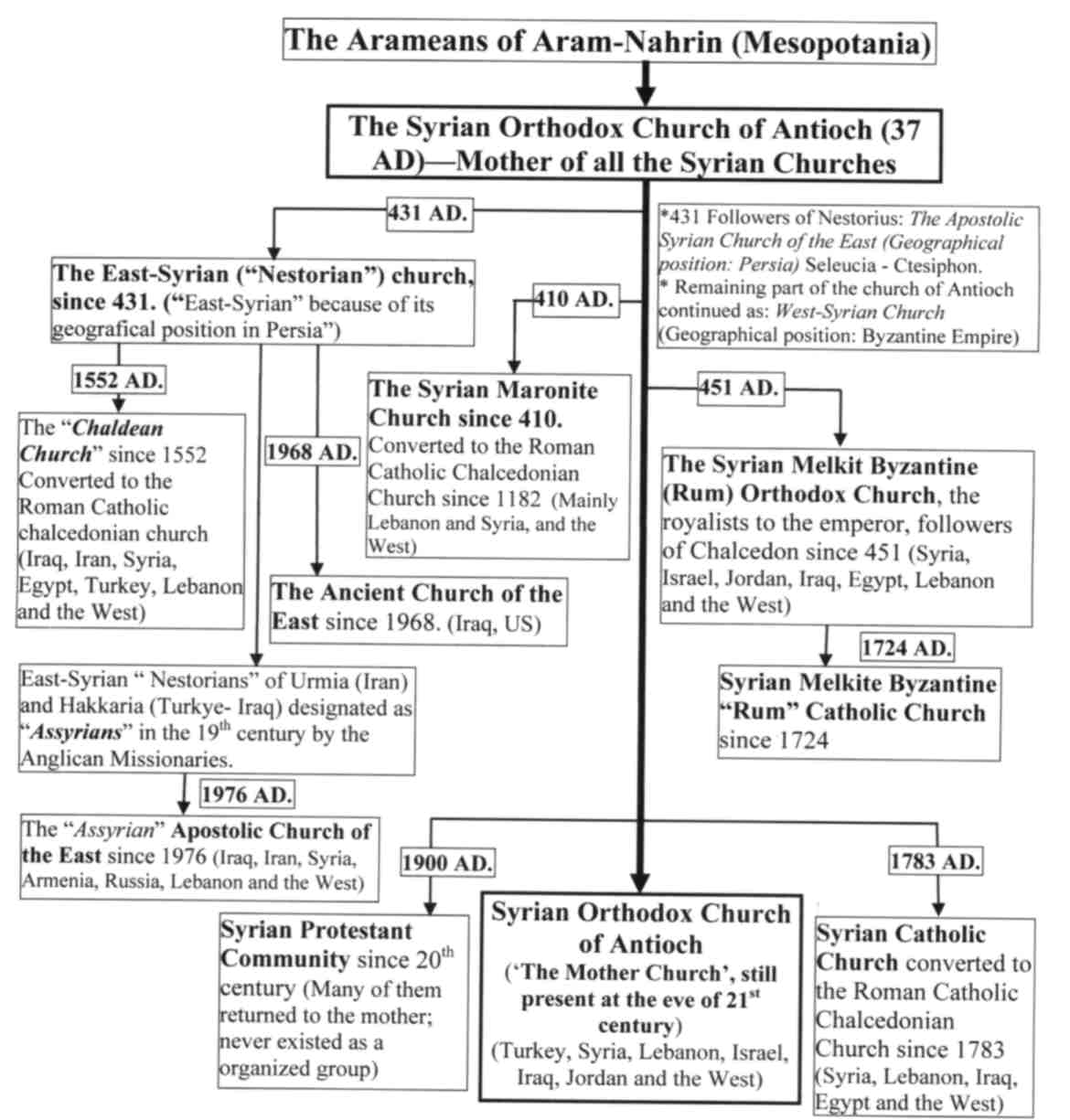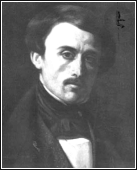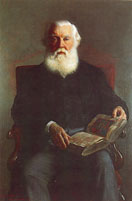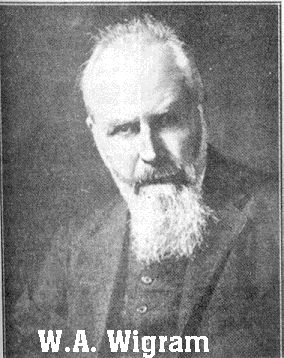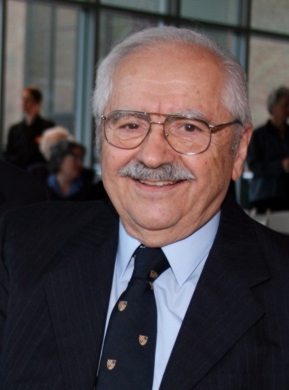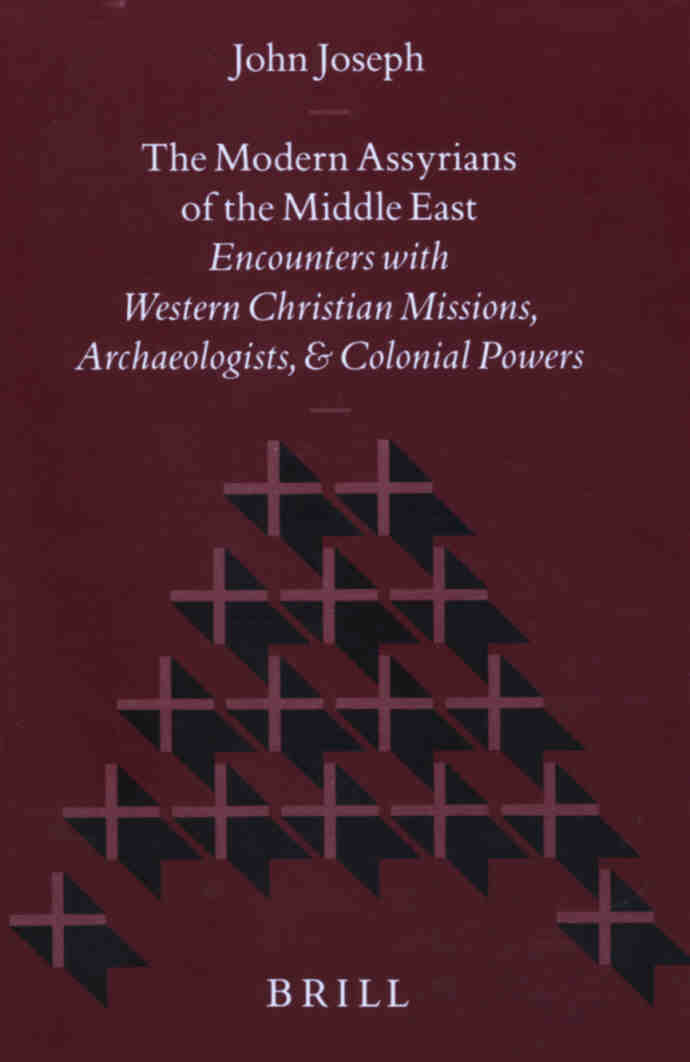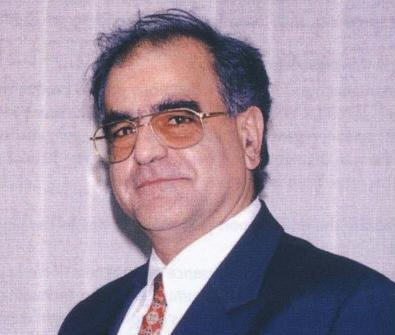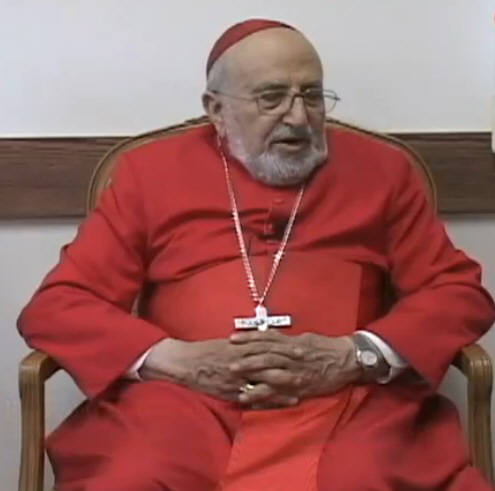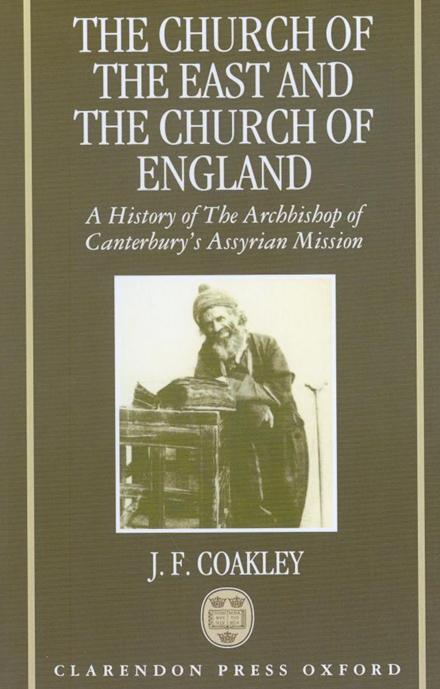|
Jacob of Urhoy (Urfa, in Turkey)
26-6-2007: Aram Nahrin: the Aramaeans, the Bible, Christianity, and the West
27-6-2007: Aramaic: the Millennia Long Trajectory of the Global Language
28-6-2007: Gabriel Sengo opens the Gates of Aramaean Thought, Culture and Wisdom
2-7-2007: Do not Call the Illustrious Nation of Aramaeans by the Misnomer 'Assyrians'!
2-7-2007: Extermination of the Aramaean Nation: Results of an Anglo – French Plan
(Photo: wikipedia.org) The Historian Poseidonios from Apamea (ca. 135 BC - 51 BC), was a Greek Stoic philosopher, politician, astronomer, geographer, historian, and teacher. He says: " "The people we Greek call Syrians, they call themselves Arameans" From: See J.G. Kidd, Posidonius (Cambridge Classical Texts and Commentaries, 1988), vol. 2, pt. 2, pp. 955-956)
(Photo: wikipedia.org) Strabo (born 63 BC or 64 BC, died ca. 24 AD), a Greek historian, geographer and philosopher is mostly famous for his Geographika ("Geography") He says: "Poseidonius conjectures that the names of these nations also are akin; for, says he, the people whom we call Syrians are by the Syrians themselves called Arameans." (From: The Geography of Strabo, translated by Horace Leonard Jones and published in Vol. I of the Loeb Classical Library edition, 1917, Book I, Chapt. 2, 34)
(Photo: http://www.ccel.org) Flavius Josephus (c. 37 – c. 100 AD (or CE)) was a 1st century Jewish historian and apologist of priestly and royal ancestry who survived and recorded the Destruction of Jerusalem in 70 and later settled in Rome. He says: ""Aram had the Arameans, which the Greeks called Syrians."" (From: Antiquities of the Jews, translated by William Whiston in 1737, Book I, Chapt. 6)
Eusebius of Caesarea (c. 275 – May 30, 339), was a bishop of Caesarea in Palestine and is often referred to as the father of church history because of his work in recording the history of the early Christian church. He says: ""and from Aram the Arameans, which are also called Syrians" (From: Sebastian Brock, "Eusebius and Syriac Christianity," in Harold W. Attridge and Gohei Hata, eds., Eusebius, Christianity, and Judaism (Leiden 1992), p. 226)
Abu Al-husayn 'ali Ibn Al-husayn Al-mas'udi, born 895 in Baghdad [Iraq] and died 957 in al- Fustat [Egypt], was a historian and traveler, known as "the Herodotus of the Arabs.” He was the first Arab to combine history and scientific geography in a large-scale work. On Tur Abdin he says: "Tur Abdin is the mountain where remnants of the Aramean Syrians still survive." (From: Michael Jan de Goeje: Bibliotheca Geographorum Arabicorum III, Leiden 1906, 54, I)
Prof. Dietrich Hermann Hegewisch born Dec. 15, 1746 in Quakenbrück [Germany] and died April 4, 1812 in Kiel, was a prolific german historian at the University of Kiel with a wide span of interests. He says: "Do not the Syrians, as they are usually called, or the Arameans, as they in fact are termed, deserve more attention in world history than they are usually given?" (From: D.H. Hegewisch: Die Aramäer oder Syrer; ein kleiner Beitrag zur allgemeinen Weltgeschichte, Berlinische Monatschrift, 2, 1794, p. 193)
On Page 197 he says: "The names Syria, Assyria, Mesopotamia, Babylon, etc. stem from the Greeks, who were not familiar with the true geography of these lands when the names first started to be used. Later, partly because of continuing ignorance and partly because of convenience despite having accurate knowledge, they persisted in using them since it would have required something of an effort to give up the old, familiar names and divisions of the countries and switch to the new ones, even if they were more accurate. The old, true, and single name of these lands is Aram; it is mentioned numerous times in the Bible of the Old Testament, and Greek scholars were also familiar with it and probably described the population of these areas as Arameans, though seldom, as they usually continued to use the term Syrian, which had been familiar to the Greeks."
On page 307 he says: "The Syrians or Arameans were not merely a numerous and large people, they were also a much cultivated people."
(Photo: http://portrait.kaar.at) Prof. Theodor Mommsen born Nov. 30, 1817, Garding, Schleswig [now in Germany] died Nov. 1, 1903, Charlottenburg, near Berlin, was a German historian and writer, famous for his masterpiece about the History of Rome. He received the Nobel Prize in Literature in 1902. He says: "the history of the Aramaean or Syrian nation which occupied the east coast and extended into the interior of Asia as far as the Euphrates and Tigris" (From: The History of Rome, written between 1854 and 1856, Leipzig, by Theodor Mommsen, Book First, Chapter One) "the Arameans defended their nationality with the weapons of intellect as well as with their blood against all the allurements of Greek civilization and all the coercive measures of eastern and western despots, and that with an obstinacy which no Indo- Germanic people has ever equalled, and which to us who are Occidentals seems to be sometimes more, sometimes less, than human." (ibid, Book Third, Chapter One)
(Photo: wikipedia.org) Prof. Theodor Nöldeke born March 2, 1836 in Harburg near Hamburg, died December 25, 1930 in Karlsruhe, was the leading german semitic scholar, who studied at Göttingen, Vienna, Leiden and Berlin. He says: "The main body of the population of all these wide landscapes from the Mediterranean Sea to beyond the Tigris belonged to a certain nationality, that of the Arameans." (From: Th. Nöldeke: Assyrios Syrios Syros, in Zeitschrift für klassische Philologie, Hermes 5, Berlin 1871, p. 460)
On page 461 he says: "It is well understandable that people have started to transfer the name of the country to the most important nationality and so the name 'syrian' was apprehended ethnological and was equated with 'aramaic'."
On page 468 he says: "Since the times of Alexander [the Great], if not already somewhat earlier, people have started to transfer the name of the Syrians exclusively over the prevailing in Syria nationality, and in this way this originally political-geographical term became an ethnological one that was identified with the local Arameans."
"From the time the Greeks came to have a more intimate acquaintance with Asia, they designated by the name of Syrians, the people who called themselves ´Arameans’.” (From: Th. Nöldeke, Kurzgefasste Syrische Grammatik (Leipzig, 1880), p. XXIX)
"Regarding the name of this nation and its language is the original 'Aramean’ in essence also the only one [sic], that for the employment of the present-day scholarship as yet strongly fits.” (From: Th. Nöldeke, "Die Namen der aramäischen Nation und Sprache,” in Zeitschrift der Deutschen Morgenländischen Gesellschaft 25 (1871), p. 131)
(Photo: www.doaks.org) Karl Eduard Sachau born 20 July 1845 and died 1930 was a German orientalist. He was 1872 professor at the University of Vienna, and in 1876, professor at the University of Berlin, where he was appointed director of the new Seminar of Oriental languages in 1887. He is especially noteworthy for his work on Syriac and other Aramaic dialects. He says: "The nation of the Arameans: This national name later, mainly in consequence of Jewish-Christian literature influences, gave way to the Greek designation Syrians." (From: Verzeichnis der Syrischen Handschriften der königlichen Bibliothek zu Berlin von Eduard Sachau 1. Abteilung, Berlin 1899, Vorrede I)
|
Aramean people: Aramean people (not to be confused with ‘Armenians’) speak Aramaic, the language spoken by Abraham, Moses and Jesus. They are the indigenous people of what was called in ancient times Aram- Nahrin, in our days it is called ‘Mesopotamia’. Some Arameans today identify themselves with “Assyrians”, because of the spiritual colonial hate generating activities of the Western missionaries and diplomats in the Middle-East in 16th and 19th centuries. Other Arameans became known as “Chaldeans”. However all of them are Arameans.In Turkey, the Arameans are called: Süryani. In Arabic they are called Al- Suryan.
These are two different names for the same Church of the East. The term "Assyrian" was added to the (Syrian) Church of the East in 1975 after the assassination of the Patriarch Mar Eshai Shamun XXIII. Regarding this assassination; professor John Joseph says,, The District Attorney further argued that one of the motives in the killing was Assyrian nationalism; he tried to prove that the Assyrian Universal Alliance (AUA) was involved in the assassination" (Professor John Joseph,, The Modern Assyrians of the Middle East”, Encounters with Western Christian Missions, Archaeologists, & Colonial powers” (page 133)
After the assassination of Eshai Shamun XXIII; a new patriarch was elected in 1976. His name: Mar Dinkha IV. The same years, thus 1976, the name of the Church has been changed in “Holy Apostolic Catholic Assyrian Church of the East” (http://www.cired.org/). The Patriarch Mar Gewargis Sliwa resides in Baghdad.
2. What is the Ancient Church of the east?
The Ancient Church of the East was created in 1968 out of the (Syrian) Church of the East as a result of dispute between Mar Thoma Darmo of India and the Patriarch of the Church of the East, Mar Shamun concerning the hereditary succession . In 1968 the Iraqi government allowed Mar Darmo to visit Iraq; after which he began to consecrate bishops and the creation of the Ancient Church of the East was a fact! The present-day patriarch: Mar Addai, resident in Baghdad; members: 5 diocese in Iraq and US
3. How many so-called "Assyrians" are in Iraq?
Because of the vast amount of misinformation spread by fanatics to distort the history of the Indigenous Aramean people in Iraq who became known as,, Assyrian Christians"; in many publication they are talking about 750.000, 1.2 million or even 2.5 million ,, Assyrians". The reality is however that there are no more than 25.000-30.000 ,, Assyrians" in Iraq. When they say,, Assyrian"; they consider, against their will, all the Christian sects in Iraq as "Assyrians". This is not only lack of respect towards other Christian (Aramean) denominations; but at the same a big insult to the brilliant scholars of the Syrian (Orthodox) Church of Antioch who all testify about their Aramean roots.
Before the invasion of Iraq in 2003, there were around 800.000 Arameans in Iraq. After the invasion, there number start to decrease to below 300.000.
4. Who gave them and made them known as,, Assyrian Christians" ?
East-Aramean Nestorians: The victims of the Western colonial activities
The East- Aramean “Nestorians” were first designated as the Chaldeans; later as Ten Lost Tribes of Israel; and finally as,, Assyrians”.
No any historical proof- only assumption based on excavations and "features of affinity" between the east-Aramean Nestorians and the Assyrians of Antiquity.
Few examples
Page 19, footnote 68 of the book of John Joseph says,, Maclean and Browne, p.6. See also Coakley, p. 147, where he quotes Maclean saying “there is really as far as I know no proof that they [‘the Syrian Christians’] had any connection with the Old Assyrians.
Page 29, footnote 94 of the same book says,, In a letter to the author, dated June 11, 1997, Patricia Crone wrote that she and Cook "Do not argue that the Nestorians of pre-Islamic saw themselves as Assyrians or that this is what they called themselves. They called themselves Suryane, which had no greater connation of Assyrian in their usage than it did in anyone else's …. We take it for granted that they [Nestorians] got the modern Assyrian label from the West and proceed to reinvent themselves.. Of course the Nestorians were Arameans" Of course, we have also to keep in mind that the famous Scholars of the Syrian Church of Antioch all of them testify of their Aramean heritage.
This is in fact only the problem of the Western "scientists". It has to do with their games to play with our cultural heritage. These materialistic, arrogant and politicized "scholars" consider themselves so wise and superior that they have imposed fake names onto our nation. If these blind "professors" would have given attention to the ancient Aramean scholars; they would understand they are no match for this historians and would respect the Aramean origin of our Nation. They come up with, by themselves invented nonsense like "nobody is pure and northern Iraq has been melting pot of many nations.". Well it can be! But we have historians of our West-Syrian as well as East-Syrian Church who were much more close to the history and had better access to the documents than you have; so why don't you listen to them and behave a bit modest and pay them some respect? You invent myths and legends behind your luxury desks and sell to the public as "history."
6. “Assyrian Christians”; indigenous people of Iraq?
Regularly we read in publications that the “Assyrian” Christians are the indigenous people of Iraq. This is however not correct! The “Assyrian” Christians are a product of the Western missionaries who came to the middle-east in the 19th century and have brainwashed the Aramean tribes of Urmia (Iran) and Hakkaria (bordering Turkey-Syria) to see themselves as ,, Assyrian” in stead of Aramean. These Aramean tribes prefer since then to call themselves ,, Assyrians” and try by all means possible to force this fake identity onto other Aramean tribes by spreading overwhelming biased information regarding the origin of our people.
Copyright © 2014 All rights reserved. You have the permission to publish this article only if you mention the whole link to it..
|
How "Assyrian" fanaticism resulted in terrorism.
Who made the East- Aramean Nestorians known as "Assyrians"?
6-9-2014: Why are modern “Assyrians” very important to the illuminati Satanists?
21-2-2014: The origin of “Assyrian” fanaticism, their blindness, veneration of occult powers
Professor Dr. John Joseph. 5-7-2008: Assyria and Syria: Synonyms?
In a letter to the author (John Joseph), dated June 11, 1997, Patricia Crone wrote that she and Cook “do not argue that the Nestorians of pre-Islamic Iraq saw themselves as Assyrians or that this is what they called themselves. They called themselves Suryane, which had no greater connotation of Assyrian in their usage than it did in anyone else…. We take it for granted that they got the modern Assyrian label from the West and proceeded to reinvent themselves… Of course the Nestorians were Arameans.” (Page 27, footnote 94)
Professor Dr. Muhammad Shamsaddin Megalommatis 28-6-2004: Progenitor of Wars and Tyrannies: the Falsehood of Pan-Arabism
10-8-2005: The Aramaeans' rise will transfigure the Middle Eastern Chessboard
18-12-2008: Syriacs, "Assyrians" and "Chaldaeans" are all Aramaeans
16-12-2008: Pseudo-Assyrians, Pseudo-Chaldaeans, and the Cultural – National Needs of the Aramaean Nation
Patriarch Emmanuel III Delly
13-5-2006: Is there an Assyrian cause in Iraqi Kurdistan?
2-8-2005: IRAQ's Modern History. The Arab Majority and The Minorities
“The Church of the East and the Church of England: A History of the Archbishop of Canterbury's Assyrian Mission “ is the title of the book written by J.F. Coakley and published in 1992.
On page 147 Coackly reports about a dispute between Arthur Maclean, head of the Archbishop of Canterbury's Assyrian Mission from 1886 to 1891, and Hormuzed Rassam, the brother of Christian Antun (Isa) Rassam; a Chaldean family from Mosul. We read: “As he (Maclean) insisted, the ‘Syrians’ called themselves that, never ‘Assyrians’; …… to apply the name ‘Assyrians’ to these Eastern Syrian Christians appears to me either an error, or else pedantry. There is really as far as I know no proof that they had any connection with the Old Assyrians. ....... ..... Why should we invent a name when we have such a very convenient one, used for centuries, at our hand? I can understand that one living close to the ruins of Nineve should have a fit enthusiasm of Old Assyria; but is it common sense to cast aside a name used by the people themselves, and to invent another for them of very doubtful applicability? “
|
